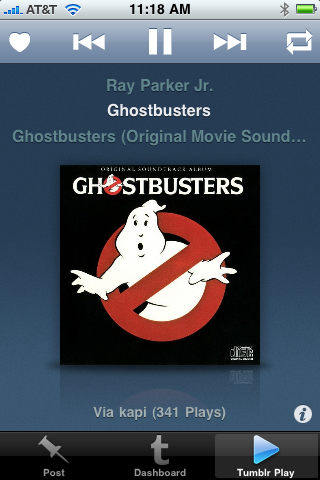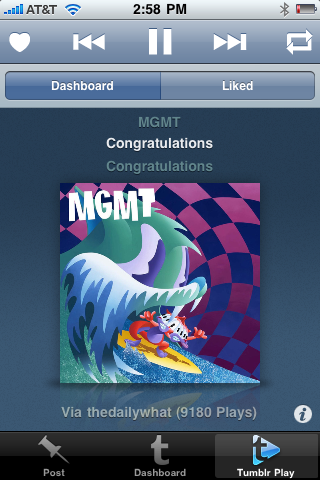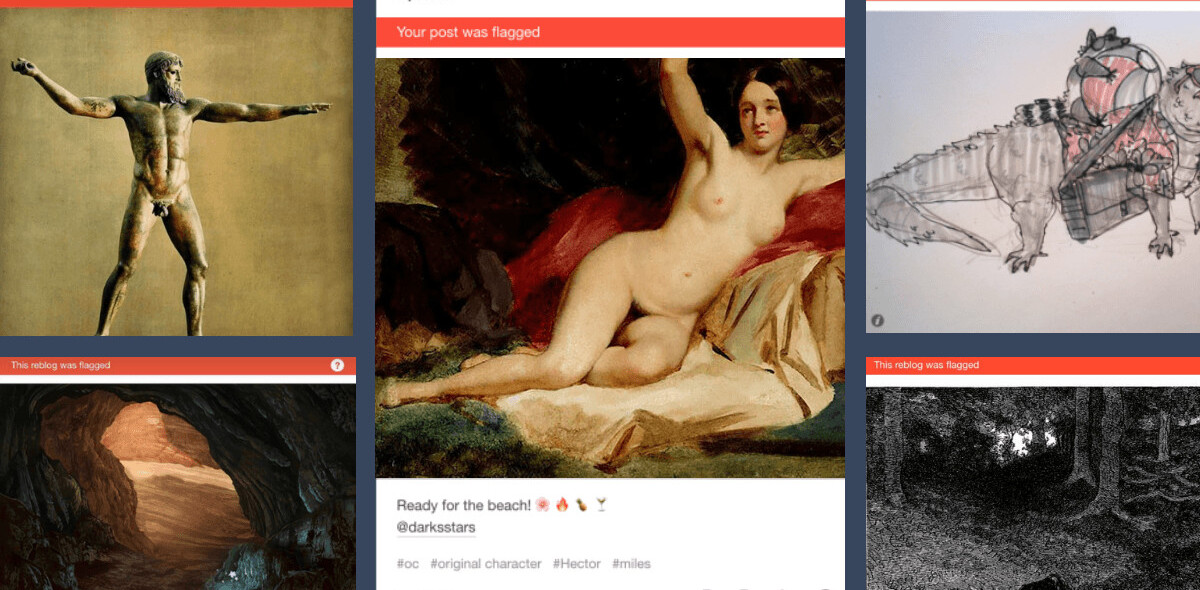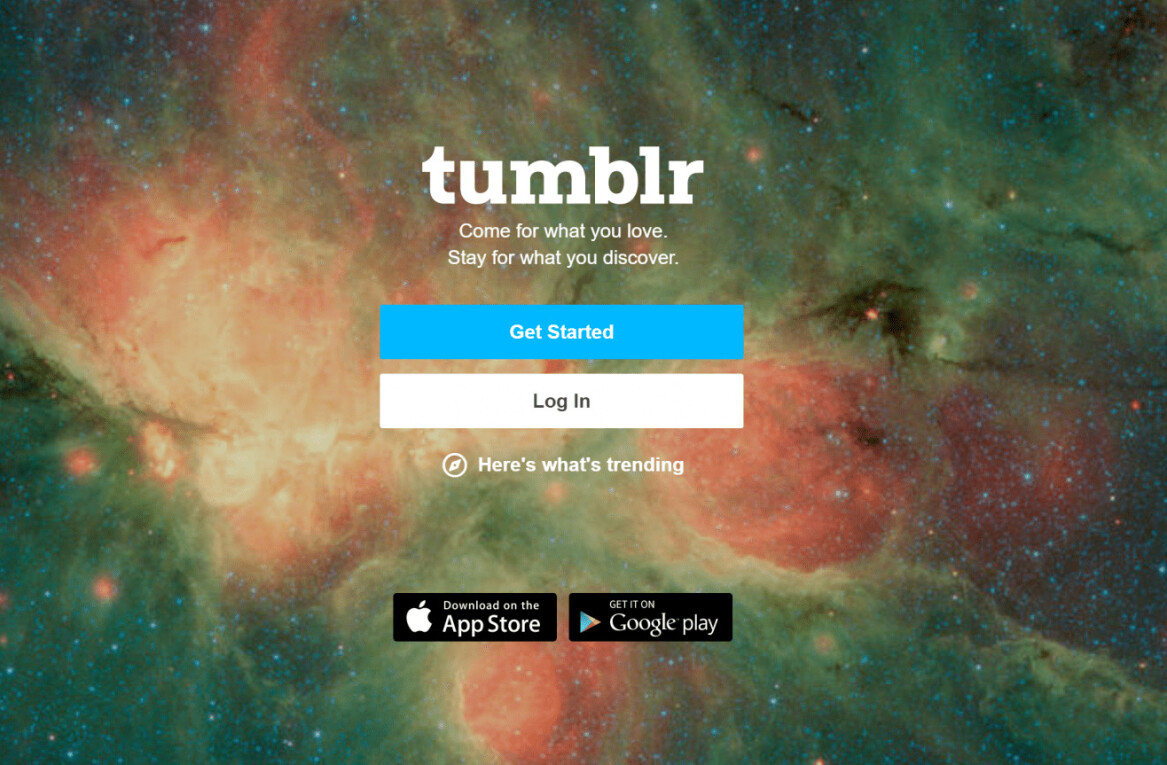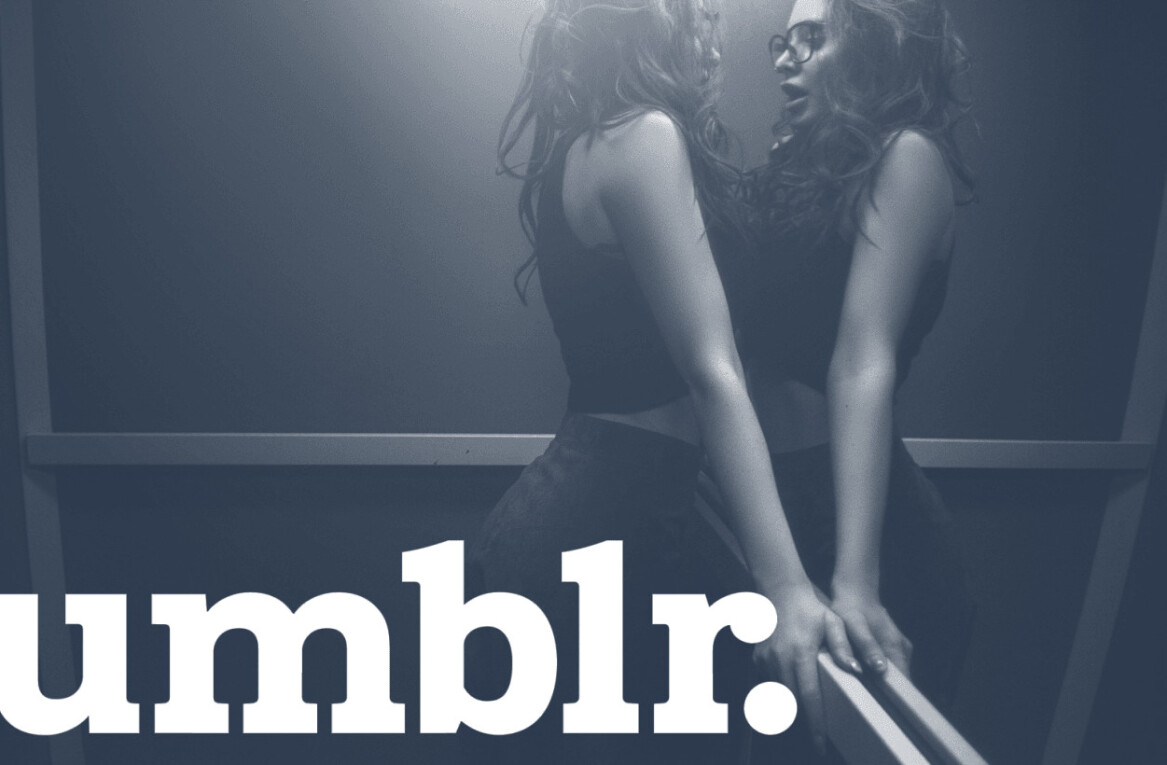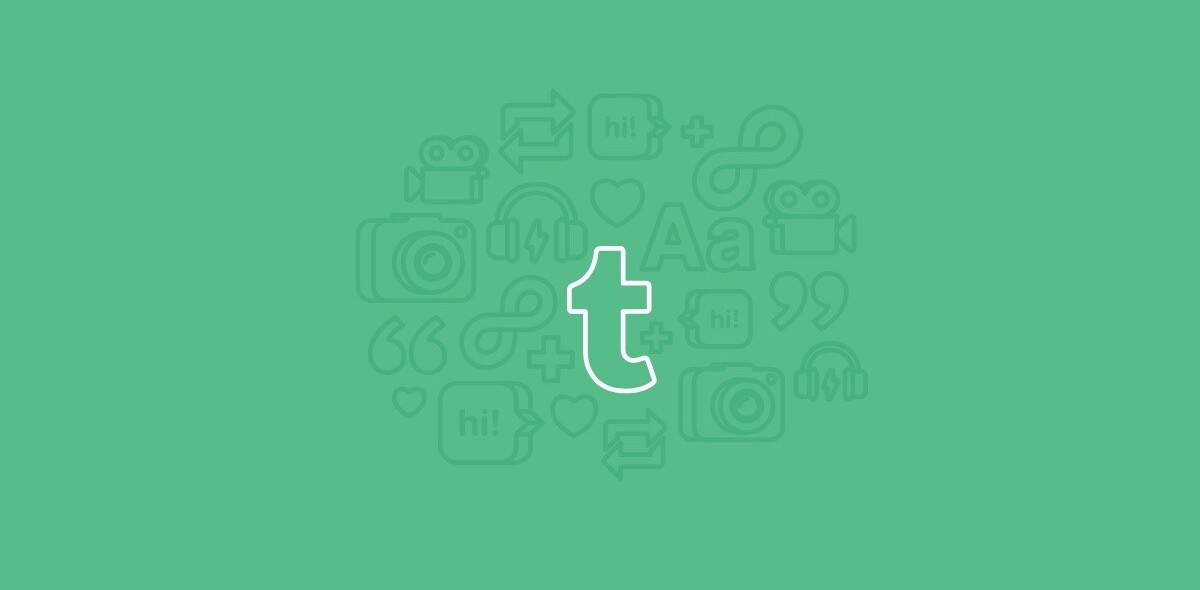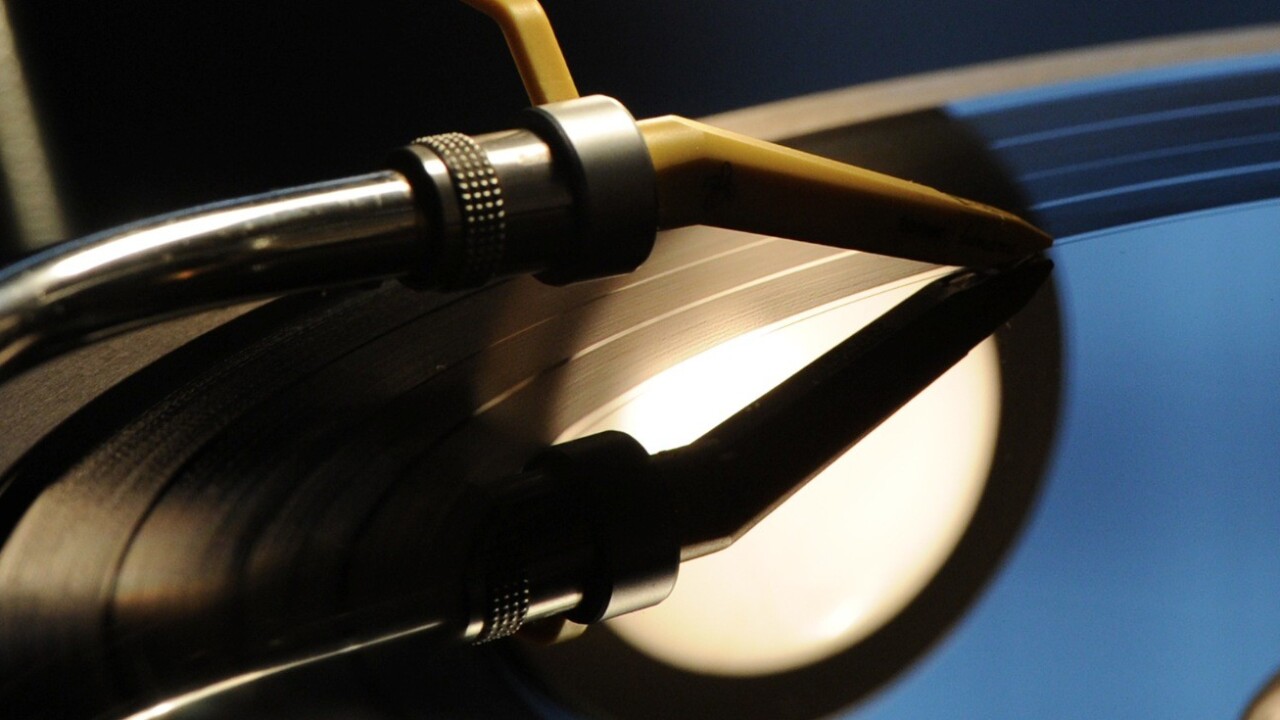
Last week, Twitter launched its new social music discovery app #Music. A lot of us thought that this was a long time coming, as musicians are a big component of Twitter’s celebrity users, and many of them follow other musicians, creating an easily exploitable way to expose users to popular music.
But there’s another component to Twitter music that’s even more compelling: its potential to expose people to new music, from artists that they may not have heard otherwise. Almost every new singer or band has some sort of Twitter presence, as it’s become a part of the PR landscape.
But there’s another platform that has been even better known for surfacing content from lesser-known creators, in fact, it’s right in the slogan: follow the world’s creators. That platform, Tumblr, seems like a natural fit for a sidecar network that serves up pure music discovery, so it’s odd that a version of something like Twitter #Music for Tumblr never happened.
But, thanks to an early third-party client which was later acquired by Tumblr, it turns out that it actually did.
Today, Mobelux’ Jeff Rock shared a post about a feature of the development house’s classic Tumblerette client for the platform called Tumblr Play. We had a chance to speak with him briefly to find out more about the music discovery feature.
Tumblr Play was a super-secret hidden feature in an early build of Tumblerette, a client that Rock says he created in a desire to play around with the new (at the time) iPhone SDK. He shipped it in September of 2008.
“I wrote it because I loved tumblr and they had an API. It started Mobelux,” Rock tells us. “In early 2009 tumblr reached out and by February we’d reached a deal for an acquisition. Tumblrette was updated with a few more features and official art [and it was] renamed tumblr for iPhone. We started a maintenance agreement then which lasted up through [last year].”
Mobelux would go on to create other clients for Tumblr, but the Tumblr Play feature was removed from the app in 2010.
At this point you might be thinking to yourself that you don’t remember the Tumblr Play section of the app. That’s not surprising, because it was hidden behind a very precise set of locks that involved shaking your phone, and a secret passphrase. This was done because there was a lot of uncertainty about just the kind of legal hot water that this kind of ‘music aggregation’ could get Tumblr or Mobelux in from a licensing standpoint.
The feature took Rock a ‘couple of weeks’ to get it designed and in the app, and it quickly became a place where he found new music.
“I found all kinds of bands through tumblr play that I otherwise wouldn’t have heard,” he says. “I discovered Animaniguchi that way, off the top of my head. Then when they played a show in Richmond I bought a ticket to see them live. That’s the dream for these guys, right?”
We asked Rock why another network hadn’t done something similar until Twitter ended up doing it.
“Fear,” he says. “And because when your main business goal isn’t to disrupt an industry you (and your investors) may not be jumping up and down to roll a secondary, tertiary feature that appeals to litigators. I think that for a lot of networks it’s appealing, but simply too risky. ”
Obviously the biggest roadblock was the music licensing, which technically Twitter didn’t even solve, as it tapped Rdio and Spotify to serve up full songs in Twitter #Music, and they have their own licenses. We asked Rock if he thought that it would have flown today, if Tumblr had made deals with those streaming services in full effect? He pointed out that Tumblr recently partnered with Spotify for its audio posts, so it’s definitely something that it could, or may end up, doing.
Following artists on Twitter is actually the worst, as they’re not the best ‘tweeters’ for the most part. They’re mostly self-promotional or retweets of fawning follower praise. There are a few accounts that ‘do it right’ but for the most part they’re immensely boring. The only value is their follow network, because it shows you (ostensibly) what music they’re listening to. I don’t think it’s a coincidence that there is no way to see a music artists’ tweets at all in #Music.
Tumblr is another beast entirely. It’s a muscle that does nothing but pump new underground content up through the strata of the web until it hits a tipping point and bursts into the public consciousness. It’s an ideal place to discover indie bands and music that you wouldn’t have otherwise.
A final quote from Rock highlights what is so great about combining the discovery engine of something like Tumblr Play with a community of heavy sharing and creating.
“Sure, you ended up with the occasional comedy skit in between an eclectic mix of pop and indie music, but that was awesome,” he says. “That was Tumblr. It was a sonic representation of your Dashboard and it kind of kicked ass.”
Be sure to head over to Rock’s site to read his account of Tumblr Play and exactly how it worked firsthand.
Image Credit: JOHANNES EISELE/AFP/Getty Images
Get the TNW newsletter
Get the most important tech news in your inbox each week.
